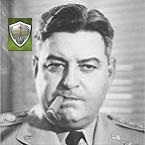Central Blue
Posts: 695
Joined: 8/20/2004
Status: offline

|
quote:
ORIGINAL: Curtis Lemay
If it is intrinsic to the weapon system, then it isn't a proficiency issue. A more accurate weapon is going to be more lethal than the less accurate one. And this is a factor for why earlier weapons might need to be rated lower than modern ones of the same caliber and ROF.
If it were my goal to reform the entire db of generalized artillery weapons in the existing database, I agree with you. But I tend to think that the problem you identify is most likely to show up where there is a significant disparity between the two sides in the indirect artillery. Making the artillery work for pre-WW I models is not high on my list, though I am awfully suspicious of that Austro-Hungarian piece from 1899 that has an AP value of 140.
quote:
The computer controlled system is just going to be more accurate, period.
I'll let the slide-rule guys argue that with you. I was interested in how Norm arrived at his numbers, at least for the period I am interested in. I doubt he included accuracy in his calculations. If there were some way to figure it, and put it to use, I wouldn't be against it. But that would be in the realm of improving on Norm's numbers, and for a more weapon-specific DB than we have to begin with.
quote:
Of course it's an issue. It means that shell weight alone isn't enough to determine the lethality of a given ROF. You have to factor in the explosive power of the charge. It doesn't matter if it's on the internet if it isn't in the formula.
Well, since my spreadsheet includes the weight of the charge, as well as the weight of the shell, you'll have to take that up with someone that relies on shell weight alone.
I was trying to improve on Norm's original formula that extrapolated the bursting charge from the diameter of the projectile, by replacing it with available data on the actual weight of the charge. The same Technical Manuals that provided my data on the weight of the charge, also have information on the composition of the charge. So, it wouldn't be hard to plug that information into the spreadsheet that I uploaded. I don't know when I will get around to it, but I published the spreadsheet as a theory for others to play with.
quote:
I'm not so sure about that. Can't it be delivered by artillery? Regardless, TOAW does have air equipment, so it's an issue one way or the other.
Right. But I wasn't trying to solve every question in the game before posting the spreadsheet. I didn't notice any napalm shells in the WWII artillery data I was looking at. There was certainly the nasty Willie Pete, but since you only get to pick one shell to measure for range and effect, you have to make a choice.
quote:
By "grape" I was referring to cluster bomblets.
Ah, submunitions. I tend to agree that they would probably not scale in quite the same way. I don't know if that is the most common shell fired these days, but I'll bet that there is a fair amount of information available through sources like the Fort Sill Field Artillery Journal, so that the resulting numbers wouldn't look like something that had to do with the color of my mood ring when I was editing that piece.
quote:
I think it's been acknowledged on this and other threads that a simple ROF x shell weight formula doesn't account for all of Norm's numbers.
You'll have to take that up with someone who is making that argument. Since this thread started with a question about Norm's AP value for artillery, I believe that I am on to something that answers that question, at least for artillery between WWI and, perhaps, the widespread use of submunitions or other significant post-WWII technical multipliers. I've tried to answer questions that relate to that original question. And you have raised valid points about artillery.
If people want to argue with the work because they think it's a Theory of Everything or doesn't answer their questions about the air model . . . 
quote:
Regardless, even if he didn't factor in everything, that doesn't preclude anyone else from doing so.
I think he tried to keep it simple. If others think it can be refined to see real world differences, I just want to know if the change is made by mood ring, or by some factor that others can test and use.
< Message edited by Central Blue -- 12/10/2010 6:35:55 PM >
_____________________________
USS St. Louis firing on Guam, July 1944. The Cardinals and Browns faced each other in the World Series that year 
|
 Printable Version
Printable Version












 New Messages
New Messages No New Messages
No New Messages Hot Topic w/ New Messages
Hot Topic w/ New Messages Hot Topic w/o New Messages
Hot Topic w/o New Messages Locked w/ New Messages
Locked w/ New Messages Locked w/o New Messages
Locked w/o New Messages Post New Thread
Post New Thread